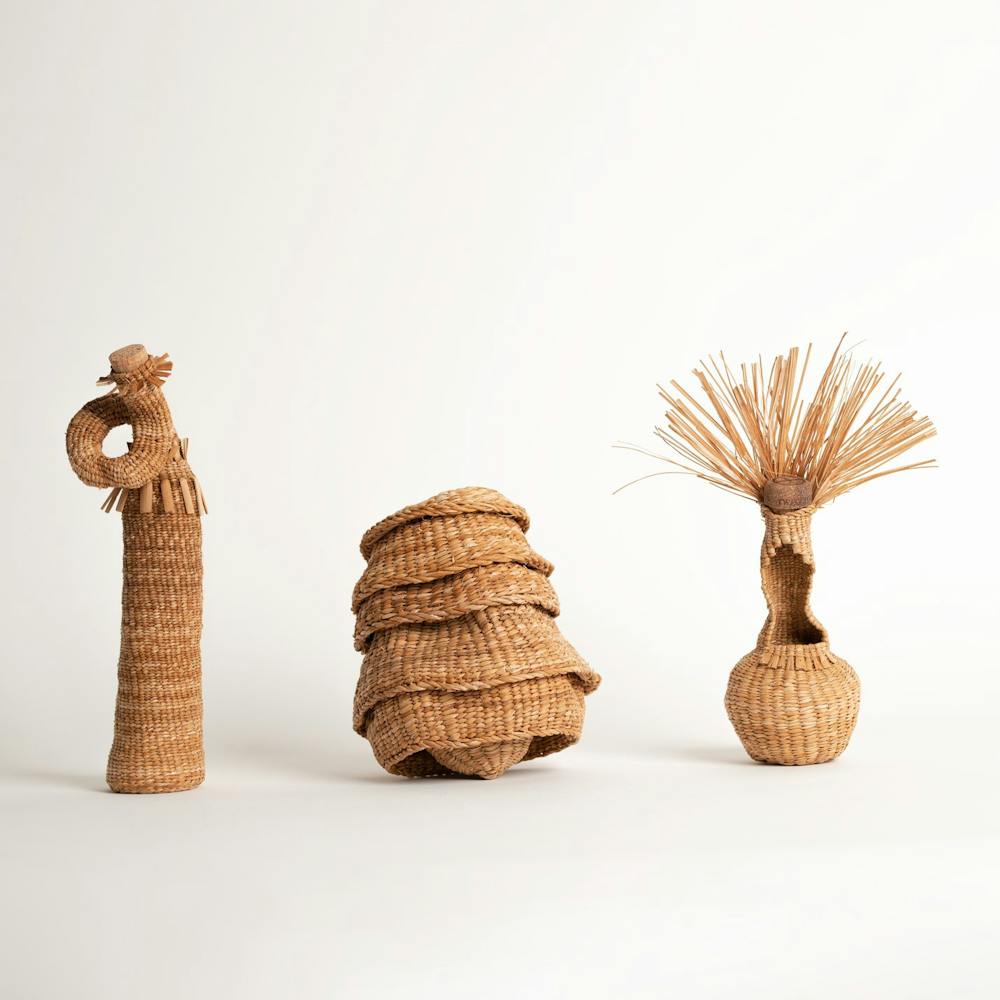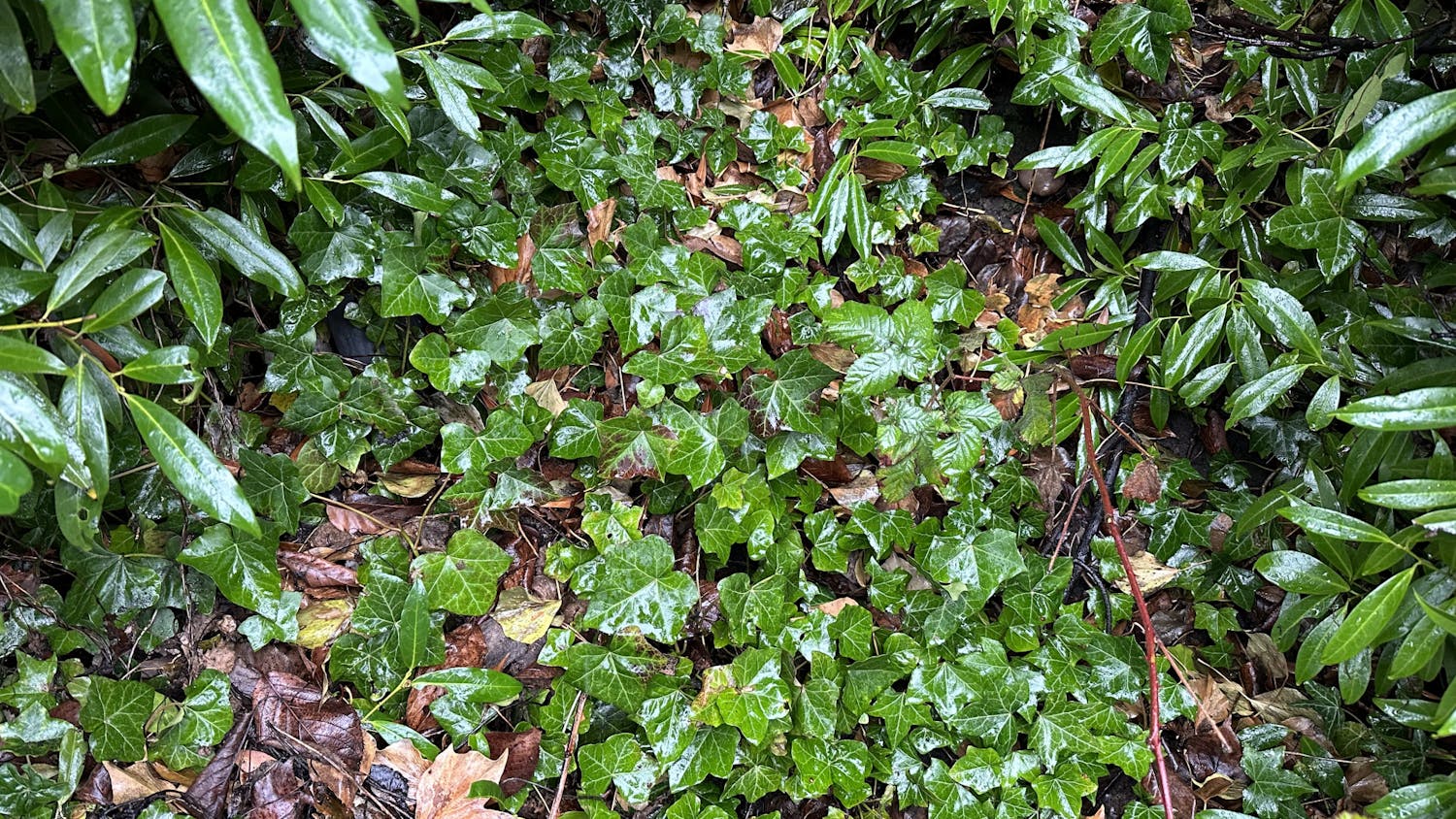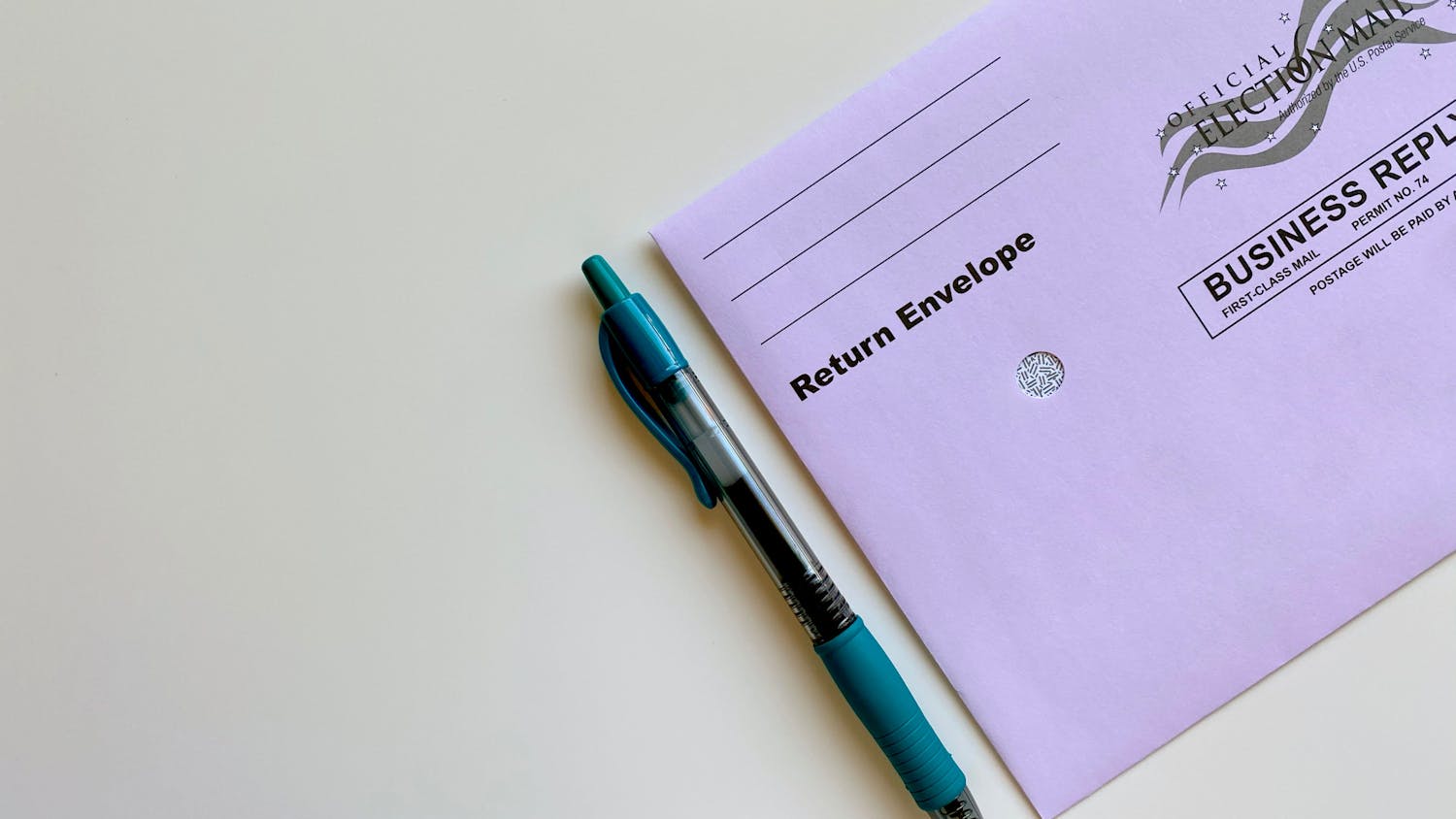Have you ever looked at a hand-woven basket and thought, “How did someone make this?” Basket weaving may be a more accessible craft than once thought – perhaps you’ve attended a weaving lesson. If you are feeling called to learn, listen.
“Every single human culture has traditions in basketry, meaning that every single human has a personal ancestral connection to the craft. The techniques of basketry are also fairly universal with only a few variations worldwide,” Kadey Ambrose said.
Ambrose received her master’s degree in studio art, which was centered entirely around basketry.

Sculpture by Kadey Ambrose, titled “Gratitude and Reciprocity” on display at the Tarble Art Center in Charleston, Ill., in 2022. The baskets, made from plant and wool material, are a symbolic act of reciprocity towards the land and relationships humans have with one another. // Photo courtesy of Kadey Ambrose
Bellingham’s first residents were the Native Americans of the Lummi, Nooksack, Semiahmoo and Samish tribes. These tribes have been here since time immemorial, hunting, gathering, harvesting and creating an unbreakable connection with the environment around them.
The baskets that the Coast Salish people wove served a variety of purposes. Baskets were used to store and transport objects, but they were also used to protect and hold sleeping infants. They also held water and were used while cooking.

Baby and dolly bassinets woven from willow, created by Shannon Robertson in Bellingham, Wash., in the Marietta-Alderwood neighborhood, on Feb. 16, 2023. Robertson teaches classes on weaving with willow to share her love of the craft. // Photo by Sophie Bechkowiak
The craft of basket weaving in Native American culture has been passed down through thousands of generations and is still continued today with little to no change to the practice. Continuing the art form will keep this cultural tradition going for many years to come.
Ambrose said it is probable that most people, if not everyone, could follow their ancestry back to a time when basketry was essential for all early cultures across the world.
“Your ancestors were basketmakers — so if you’re feeling pulled to learn basketry, it’s because it’s your heritage,” she said.
Aimee Wright, a collaborator with Jazmen Yoder, who is the founder of Northwest Natura – a new start up focused on environmental education – said plants and the diversity of those plants are important to the Coast Salish groups in the area.
“I don’t think you can really get to know the plants in this region without understanding just how incredibly diverse and influential that diversity is on the tribes here,” Wright said.

Miscellaneous baskets line the workshop of Shannon Robertson in Bellingham, Wash., in the Marietta-Alderwood neighborhood, on Feb. 16, 2023. Robertson uses willow to create all sorts of sturdy colorful baskets. // Photo by Sophie Bechkowiak
Even newer weavers understand the importance of basketry; it is an ancient art that should be preserved and honored.
“Basket weaving is a sacred tradition in so many cultures across the globe. It is significant to me because I want to honor traditional techniques by creating functional woven sculptures,” said Lani Suyama, an intermediate basket weaver.
Shannon Robertson, a local basket weaver and instructor, also feels a strong connection to her heritage through weaving.
“When I’m doing weaving and also when I’m spinning wool, I just think this is how the mothers before me did these things, and it just feels good to be connected that way,” she said.
A main reason people are drawn towards basketry is the creation of something functional from the ground up.
“I love the simple fact that my hands can make something beautiful and of use, and in doing so, I myself am beautiful and of use,” Ambrose said.
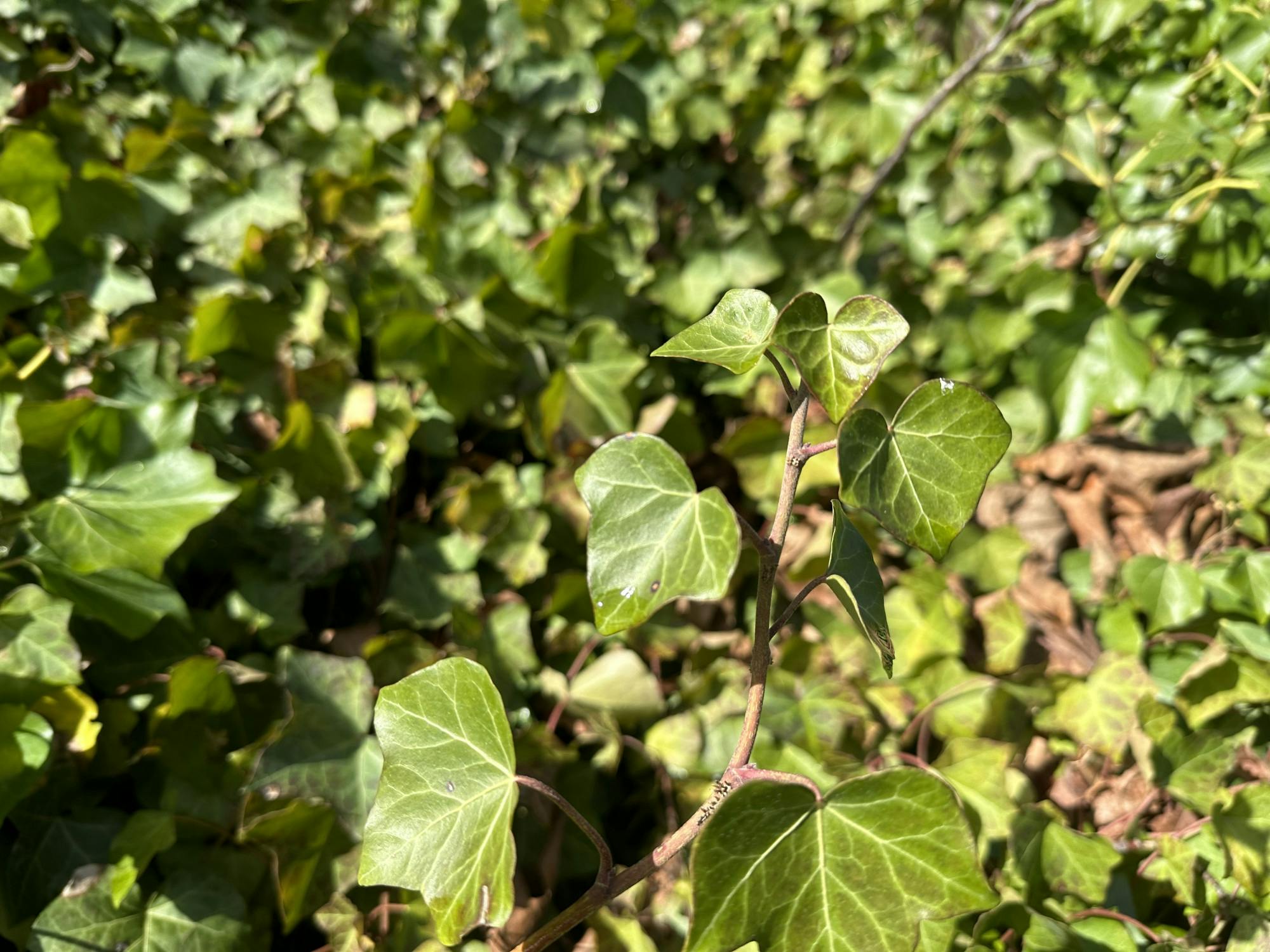
Invasive English Ivy in the sun on the Interurban Trail in Bellingham, Wash., on Feb. 21, 2023. Northwest Natura’s most recent weaving class taught folks to correctly harvest and weave with the ivy. // Photo by Sophie Bechkowiak
Not only is basketry a gateway to reconnecting with your ancestors, it connects you with the environment around you. When harvesting materials for weaving, you must be respectful of the plants around you and make sure to leave them as undisturbed as possible. Or better yet, use only what is no longer living or an invasive species.
Northwest Natura used English Ivy, an invasive species, in their most recent wildcrafting class.
“In a way, it’s like this support system for the environment, getting people involved in land stewardship practices, and then also the humans get the benefit of having this art project to work on and a creative outlet,” Yoder said.
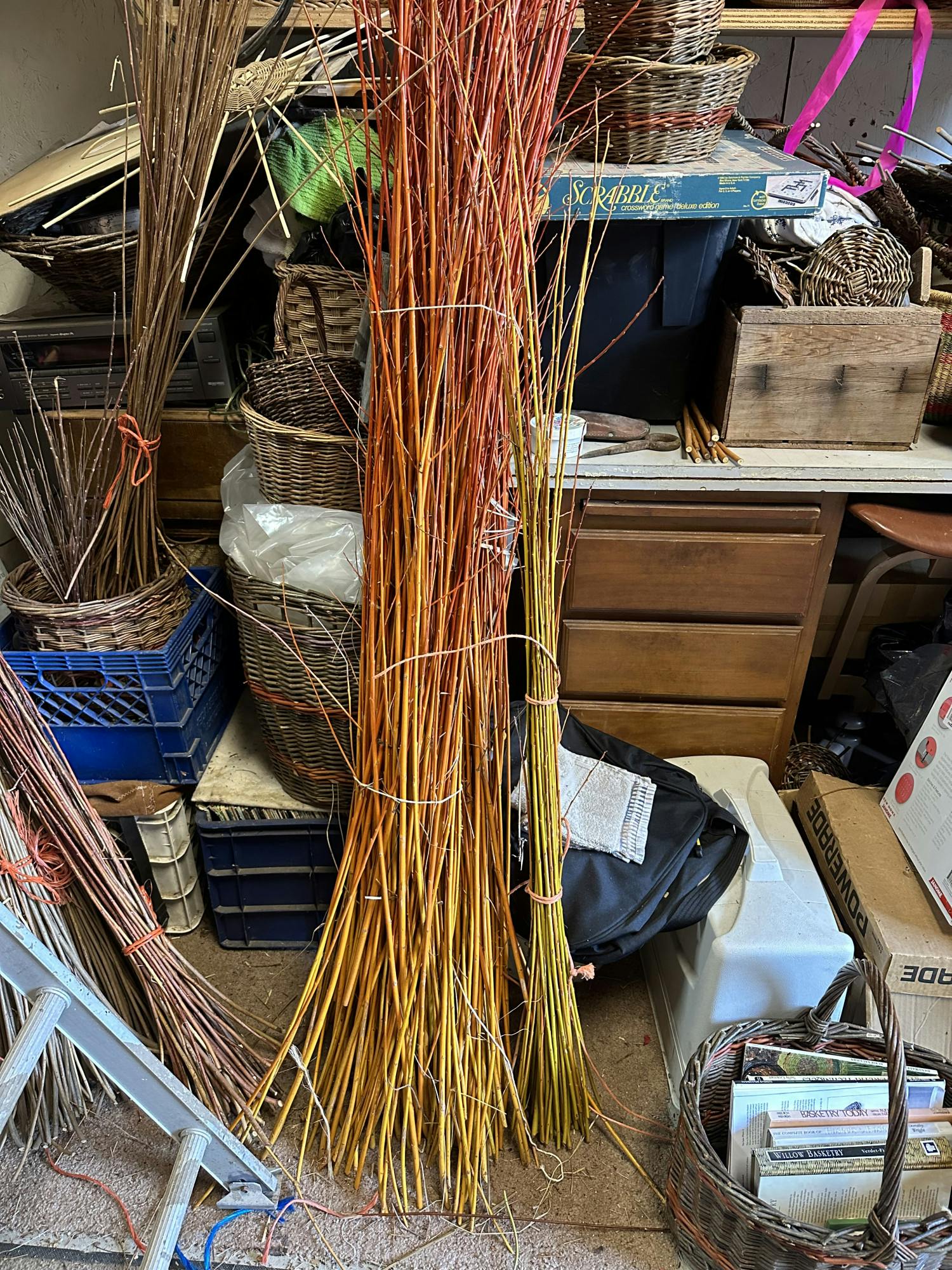
Colorful strands of willow are tied together to be used for future projects in Bellingham, Wash., in the Marietta-Alderwood neighborhood, on Feb. 16, 2023. Shannon Robertson harvests willow for her baskets. // Photo by Sophie Bechkowiak
There are many materials used to weave. Ambrose says there isn’t a material she won’t give a try. Cattails, cedar roots, bark and ferns are just a few of the materials used to make baskets.
Robertson uses willow branches, known as rods, to weave her baskets. She weaves long colorful strands of willow into sturdy, multi-purpose baskets.
“I hope more and more people will start growing willow and making baskets and start using baskets instead of plastic for things," Robertson said. "More baskets, less plastic.”
Sophie Bechkowiak (she/her) is writing for the opinion beat at The Front this quarter. She is in her fourth year at Western working towards a journalism news/editorial major and a philosophy minor. On her days off she enjoys thrifting, art, watching documentaries and goofing around with friends.
You can reach her at sophiebechkowiak.thefront@gmail.com.


